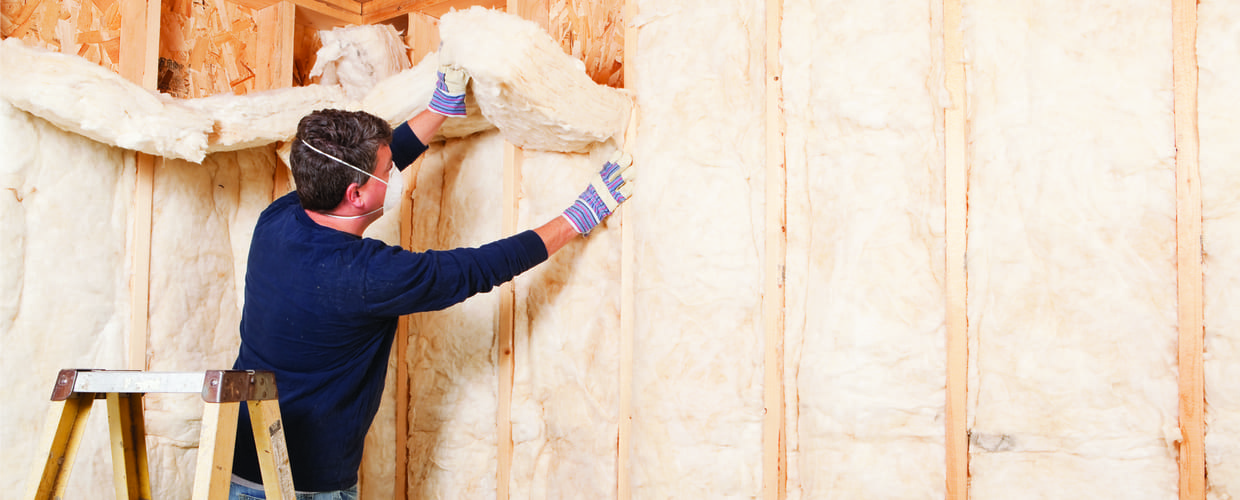When it comes to any type of roofing, two of the most important, but yet hidden factors, are ventilating and insulating. A great looking roof can be seen from a building’s outside, but you can’t see the insulation, and of course won’t see the airflow inside. Insulating a metal roof may not seem that important for the visual aspect, but it’s one of the behind the scenes things that makes it look great on the outside.
Many commercial and residential buildings not only use insulation to improve energy conservation, but they also use insulation as a noise barrier. Insulating also works as a sound barrier during heavy rain, hail, or even gusty winds. But proper installation is very important. The use of a vapor barrier is necessary, to reduce moisture and stop common roofing problems, such as damp insulation losing its R-Value.
When it comes to insulating a metal roof, there are several options available.
Insulating with Fiberglass Batts
Fiberglass batt insulation is one of the most common for roofing insulation. It is the most economical, and relatively inexpensive, plus, it’s available in a variety of R-values. R-value determines the thermal resistance. A higher R-Value means it is better insulation. Depending on where you live, climate certainly impacts the level of insulating that you need for your home or building.
It can be easily cut to length or shape that it needs to fit around, but it’s not very safe to use. Fiberglass batts are made from microscopic bits of glass. It can cause permanent damage to your hands, eyes, and lungs if you are not using the proper protective equipment (PPE) while installing.
Unfortunately, batts are not a particularly good vapor barrier. If the batt becomes moist, it can essentially lose its entire R-Value. Professional installation is recommended, in conjunction with the proper moisture barrier. What was once the preferred way of insulating a roof is now probably the most economical, but least effective.
Rigid Board Insulation
This type of insulation material is typically used to provide thermal resistance to foundations, roofs and walls. Made in sheets (panels) of various sizes and thickness, they are made from polystyrene or polyurethane.
Expanded polystyrene (EPS) is like coffee cup material, providing an R-value of 4/inch of thickness. Typically, it’s used under roofing, over foundation walls, and beneath siding.
Extruded polystyrene is like the pink or blue panels you’ll see at a home center. It’s denser than EPS and has a better R-Value of 5/inch.
When the sheets are fitted together tightly and joints are caulked or sealed with tape, it can offer maximum thermal resistance. Unfortunately, for it to be completely effective, the joints or gaps must be sealed. Further, it’s more of a challenge to fit around tight corners or unusual / awkward areas. Moisture control is absolutely essential with rigid foam board insulation so it is highly critical to be sure a vapor barrier is in place.
Insulating with Spray Foam
Although this type of insulation is the most expensive, and not D.I.Y. friendly, it is probably the optimal solution for insulating a roof. This material is mixed with water and applied through high pressure spray machine as a heated liquid. When the mixture reacts to the oxygen in the air and the water dries up from the mixture, the remaining polyurethane foam will expand, harden, and cure within minutes.
Spray foam is one of the most effective options because it’s not only self-adhering, but also easy to cover difficult surfaces, such as corners or awkward areas. You won’t have to worry about the R-Value decreasing due to a missed spot, since spraying can cover all of those areas. It’s also a barrier that prevents condensation buildup and prevents rodent or insect infestations.
Because it’s not intended to be a D.I.Y. process, it’s best to hire professionals that have the proper equipment and skillsets to perform this type of insulating installation. And always make sure to check the compatibility of the spray material to the material it’s being applied onto before undertaking this method of insulating.
What option of Insulation should I choose?
Unfortunately, we cannot tell you which style of insulating is the best for your project or roof, because there are multiple reasons for using each type of insulation. Each set of conditions is unique, whether it’s climate, style of roof, and budget, but hopefully this guide will help you make that decision a little easier. Regardless of what option you choose, make sure that moisture stays away and the result will be a metal roof that lasts a lifetime.
Contact the team at All American Steel today, or visit our display at the All American Do it Center home improvement stores in Tomah, Sparta, or Richland Center Wisconsin.


